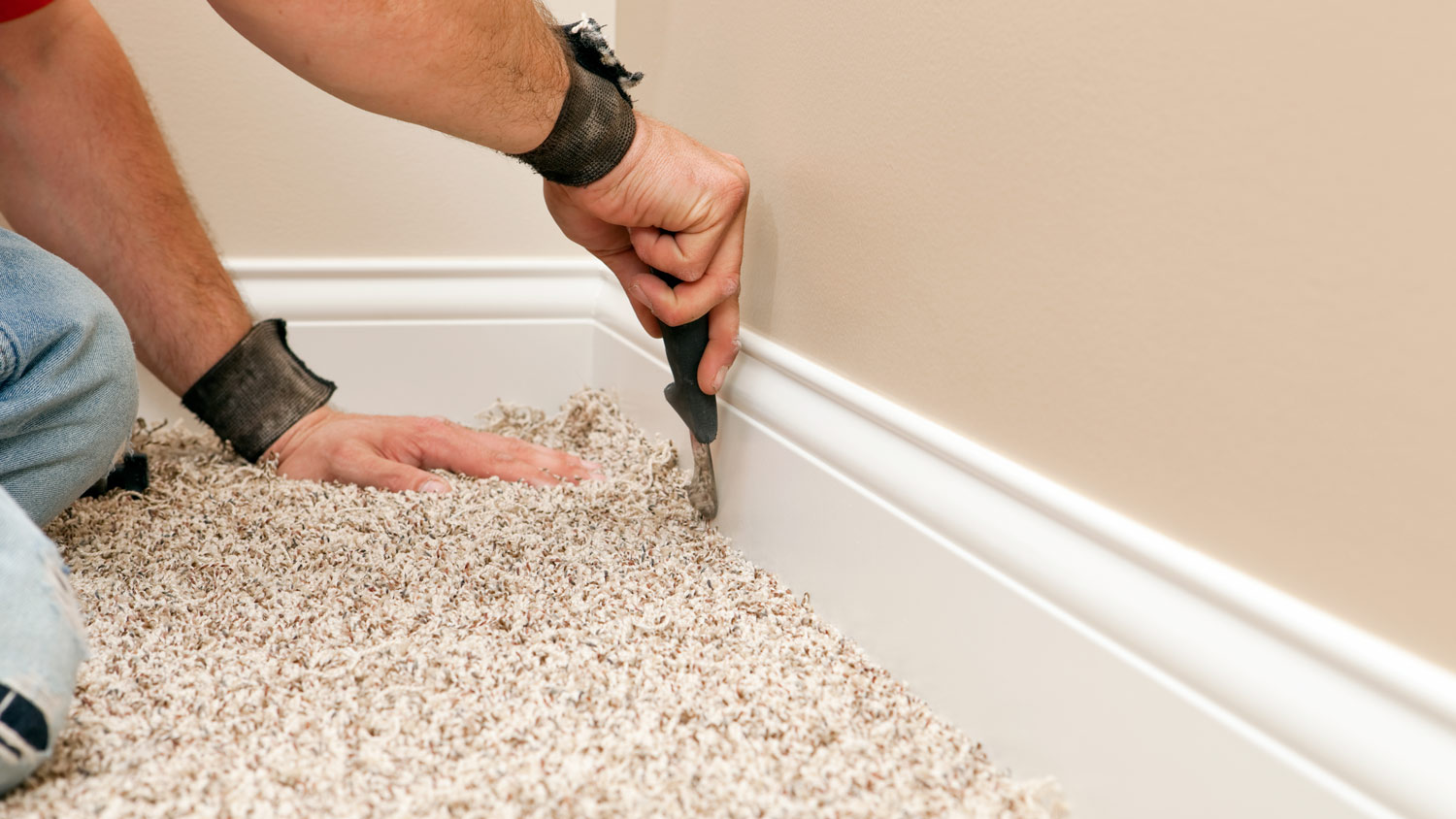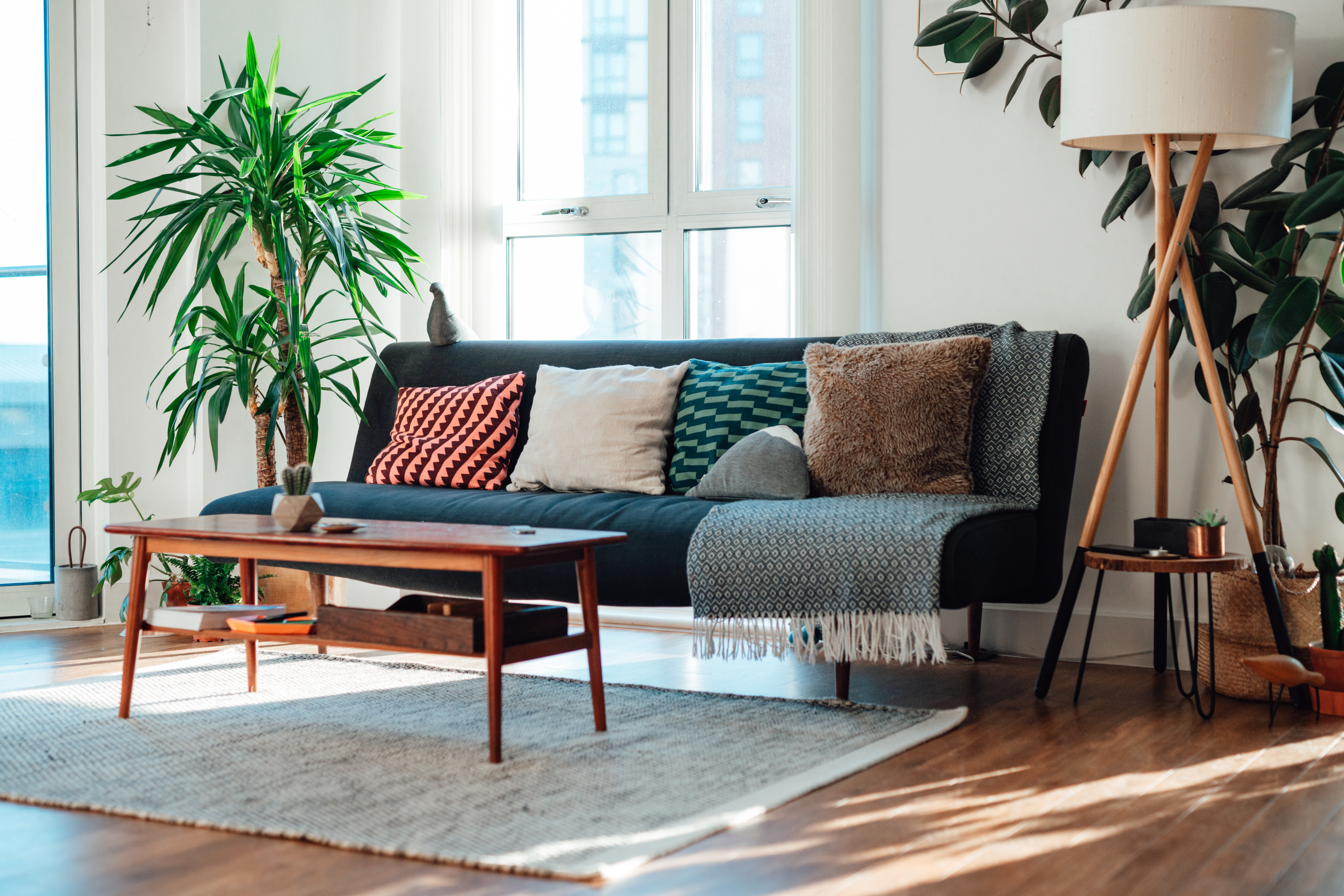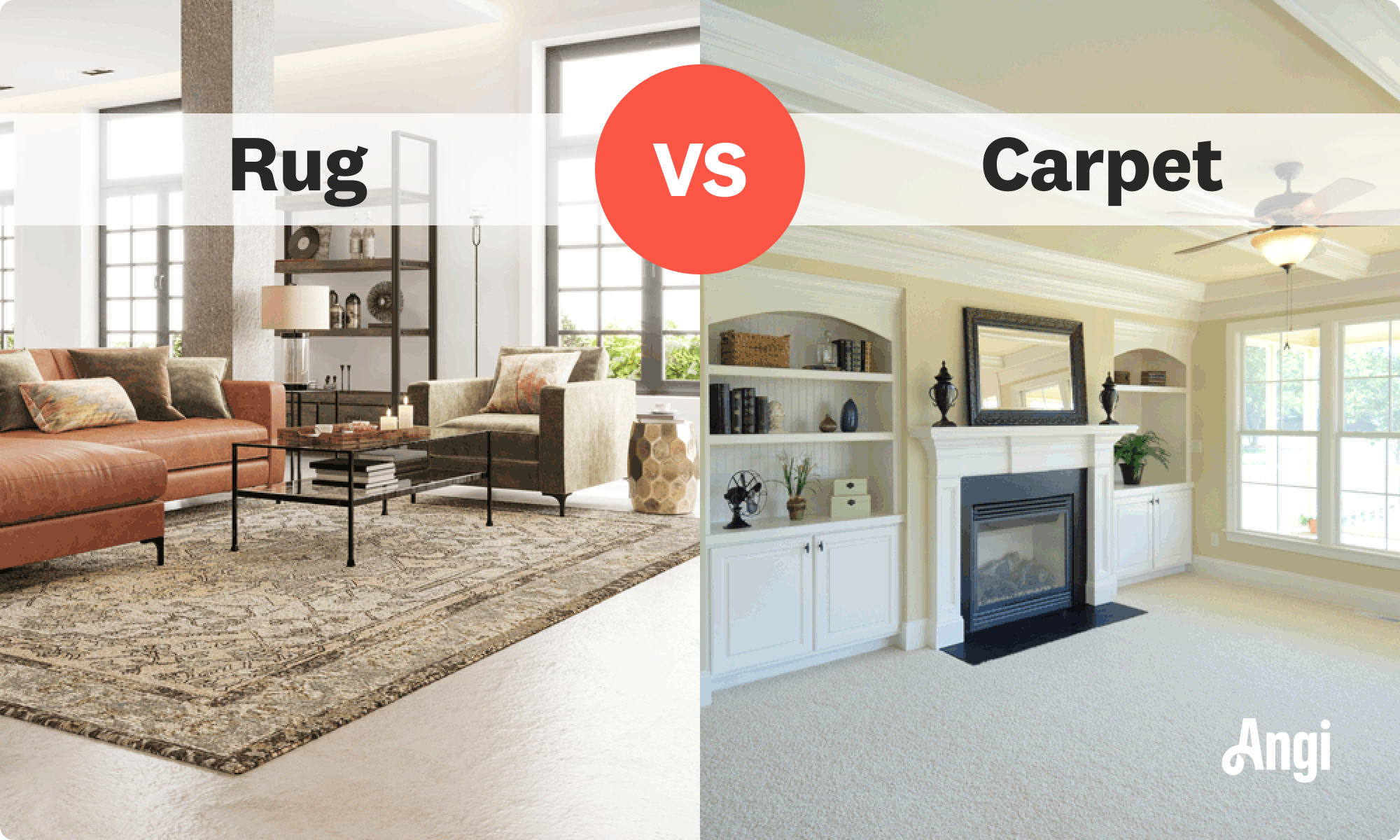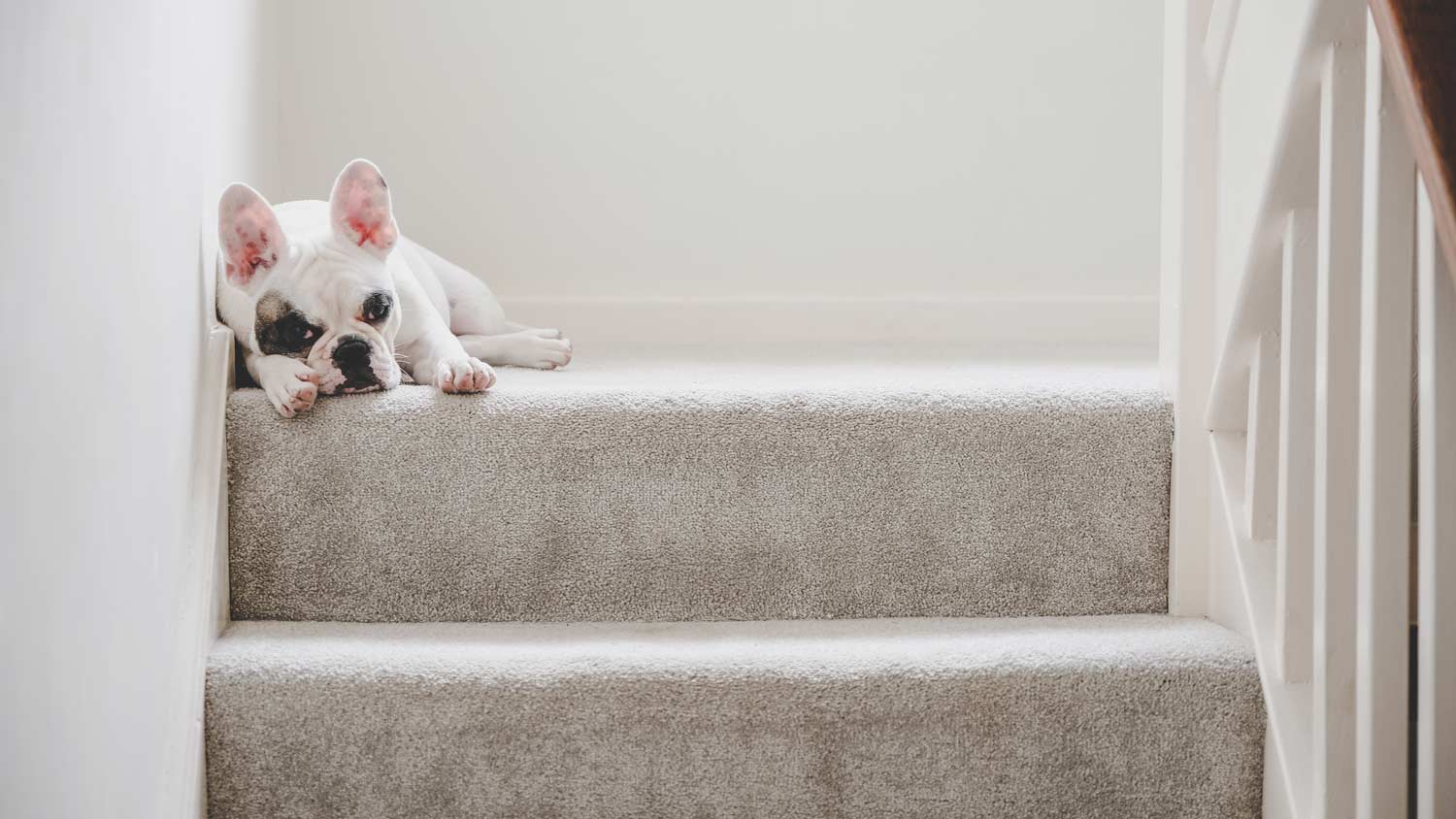
Get a clear estimate for carpet repair cost. Learn what impacts pricing, compare repair types, and find ways to save on your next carpet project.
Fuzzy flooring facts


Rugs are designed to be movable fabric overlays on top of hard flooring, while carpet is a permanent installation on a subfloor.
Carpet is less costly per square foot than rugs, but rugs have a wider variety of colors, designs, and materials to choose from, as well as the ability to customize the size.
Carpet is easy to vacuum but harder to clean thoroughly than rugs, which can be shaken or sometimes machine-washed.
Both carpet and rugs have a fairly limited lifespan and rarely last beyond 20 years.
Carpet is a poor choice for high-moisture areas like kitchens and bathrooms.
The rug versus carpet debate is ancient when it comes to home flooring, but we’re here to make your decision easier with important facts. While rugs and carpet are both fabric-based flooring options that can feel lovely underfoot, they have different strengths and are best used in different scenarios.
Rugs are portable, expensive, and offer a wide variety of designs that can match any aesthetic or decor style. Carpets offer wall-to-wall coverage, can better muffle footsteps, and cost less than rugs per square foot.

A rug, above all, is portable. In addition to this versatility, rugs come in a vast array of styles, designs, and colors. That makes rugs an ideal solution for spot coverage in kitchens, bathrooms, dining rooms, bedrooms, and much more.
However, remember that rugs go on top of flooring and are not a flooring alternative, although they can cover up flaws if necessary.
| Pros | Cons |
|---|---|
| Portable | More expensive per square foot |
| Many size options | No wall-to-wall coverage |
| Wider choice of color and design | No guarantee of the perfect size |
| Can still get the benefits of hard flooring | Slipping can be a problem |
Best for:
Matching a room’s unique aesthetic
Easier maintenance
People with hardwood floors
Portable and can move with you: You can move a rug wherever there’s space, which means you can switch angles, move it to a different room, and take it with you when you move homes—something carpet doesn’t let you do.
Many different size options: Rugs are rectangular but come in all different shapes and sizes, including large area rugs that can perform a function similar to carpet in a living room or dining room.
Wide variety of colors, designs, and textures: From traditional and contemporary design patterns to tassels and edging, rugs have more style options than carpet, which makes it easier to find the perfect look or match an existing palette.
Allows both hard flooring and a warmer, protective surface: With a rug, you can get the benefits of beautiful hard flooring while still protecting high-traffic areas and keeping your feet from getting cold in certain spots.
More expensive: Compared by square foot, carpet is often significantly less costly than rugs.
No wall-to-wall coverage: Even the largest area rugs won’t properly cover the space between the wall and the floor, which gives dust and dirt a way to collect over time.
Finding the perfect size can be tricky: While rug sizes vary, finding the exact size to match a particular spot can be a challenge and requires more shopping around than carpet, which is cut to shape.
They can slip on some surfaces: Rugs need sticky pads or other solutions to keep them from slipping and sliding around on smooth surfaces, which adds to the cost.

Carpet is a permanent fabric-based flooring that’s carefully tacked onto a subfloor to cover an entire space right up to the edges of the wall or baseboards. Carpet installation is best handled by local carpet installers since there are a lot of steps to ensure it is laid correctly. It’s available in several materials, including wool, nylon, and polyester.
Almost any room can be carpeted or made with a combination of carpet and hard flooring, but it’s not suitable for kitchens or bathrooms and can present problems in an entryway. However, the right carpet can be one of the most affordable flooring options for a house.
| Pros | Cons |
|---|---|
| Less costly than rugs | Susceptible to wear and tear |
| Offers wall-to-wall floor coverage | Can’t be used in high-moisture areas |
| Can muffle steps and sounds | Furniture can cause damage |
Best for:
People living above someone else
People on a tighter budget
People who value comfort underfoot throughout the entire room
Less costly than rugs: In most circumstances, carpet will be cheaper than the equivalent-sized rug, making carpet the best option to save money for flooring.
Wall-to-wall coverage: Carpet is tacked under baseboards and right against the wall for seamless wall-to-wall coverage, something rugs can’t do.
Helps muffle sounds: Carpet is one of the best options for muffling sound, particularly footsteps, which can otherwise sound loud and echoey, especially if you don’t live on the ground floor
Easy to vacuum: Carpets are easier to quickly vacuum than many rugs.
Can struggle with wear and tear: Carpet isn’t the most durable flooring, and it can stain, tear, or get worn down over time, especially areas like hallways or entryways where people frequently walk. These problems can be expensive to address and lower the overall lifespan of the carpet.
Can’t be used in some high-moisture areas: Moisture is the enemy of carpets and can create mildew or staining issues. That means you shouldn’t use carpets in bathrooms, kitchens, or outdoor areas.
Furniture can cause damage over time: From beds to sofas, furniture can dent and damage carpet unless handled carefully.

Now let’s put rugs and carpet head-to-head to see how they match up in several important categories.
While carpet comes in a variety of heights, colors, and even materials, it can’t compare with the immense variety of rugs available. Sizes, weaves, textures, designs, and colors are all potential customization options when you choose a rug. This allows you to match color schemes or get exactly the look you want.
Carpet prices depend on quality and any subflooring work required, but most fall between $2 and $9 per square foot (with extras like carpet padding costing more). That’s going to be significantly more budget-friendly per square foot than getting a rug. An area rug will cost hundreds of dollars or more without being able to cover as much space as a carpet, and it will still need flooring underneath.
Even the toughest carpet will struggle to last more than 20 years, and with lots of foot traffic, some sections of carpet only make it five to 10 years. That’s not long compared to other types of flooring, but it’s about equal to the expected life of a rug, and for similar reasons.
Rugs and carpet are susceptible to wear and (literal) tear, stains, and other issues that keep their lifespan relatively short. An exception is rugs with a tough, durable weave, but you often sacrifice comfort for that durability.
Rugs are slightly less likely to get stained since you can easily move them and they aren’t present across the entire room like carpet. It’s also easy to take smaller rugs outside to shake or pop them in the washing machine if they have compatible materials. Carpet, meanwhile, needs to be regularly vacuumed, and scrubbing away stains or renting a carpet cleaner takes more effort.
Rugs are DIY by nature. Some people have larger area rugs delivered if they can’t carry them, but otherwise, you can handle rugs yourself. Carpet, meanwhile, benefits from professional installation that can eliminate the risk of bubbles and tears caused by inexperienced DIYing. It may be possible to DIY carpet, but it will take a lot of work and patience, making rugs a better choice.
From average costs to expert advice, get all the answers you need to get your job done.

Get a clear estimate for carpet repair cost. Learn what impacts pricing, compare repair types, and find ways to save on your next carpet project.

Not only are carpet tiles easier to install than carpet, but they’re often more affordable. So, how much does carpet tile installation cost? Let’s take a look.

The average range to remove carpet costs $120 to $720. Contractors base carpet removal costs on square footage, home location, and installation type.

Is moisture barrier carpet padding worth it? This guide explains how it works, where it's a good idea, and when it's not the best option for your home.

Want fluffy floors but not those large and slippery area rugs or custom cuts from expensive rolls of carpet? Learn all about types of carpet tiles.

Carpets wrinkle and ripple for various reasons, but a good restretching can have them looking fresh and new again. Learn what causes carpet wrinkles and how to fix them.